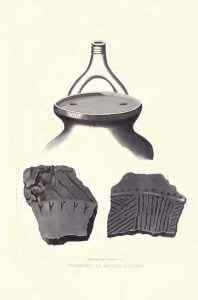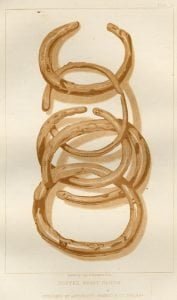Medaëka, or Amulets
Charms for preventing or curing disease, or for protection against necromancy, were the common resort of the Indians; and they are still worn among the remote and less enlightened tribes. These charms were of various kinds; they were generally from the animal or mineral kingdom, such as bone, horn, claws, shells, steatites, or other stone of the magnesian family. The Indian philosophy of medicine greatly favored this system of charms. A large part of their materia medica was subject to be applied through the instrumentality of amulets. They believed that the possession of certain articles about the person would render … Read more



